The impediment to action advances action what stands in the way becomes the way...
Don't wanna be here? Send us removal request.
Text
The intersection of the view from here and where we go from there...
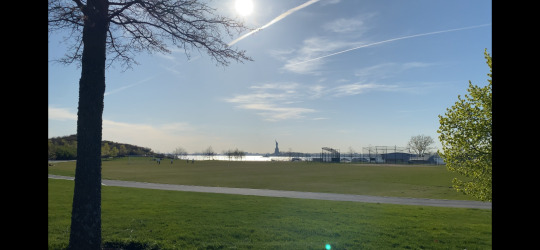
"How did it get so late so soon?" ― Dr. Seuss
One day you're just walking into your first day of class hopeful for spring and the promise of a new semester, then the next you're sharing well wishes and telling classmates you'll see them at graduation. Where does the time go? I barely managed to make it to this field trip to Governor's Island, literally deciding the night before that I could and should go. I thought about how I had never been there before, and how it would be one of the final times that our entire class was together in such a big group for such an educational yet informal gathering.
These days you need those calm moments, to experience the joy of going down a giant winding slide and for a few seconds release the weight of the world, from the economic crisis, the climate crisis, the biodiversity crisis, the humanitarian crisis. How fortunate we are to live in a place where we can have that release, when we know across the ocean others are not so fortunate through no fault of their own. As I reflect on the past semester in my applications class I think about how the message echoed that you have to find your place in the world, your talent, your contribution, your passion and use it to make change.
The view from Governor's Island's showed New York City's skyline and green spaces, which provided a serene backdrop for contemplating environmental challenges and solutions, and solidarity in defending human rights, as symbolized by the Statue of Liberty in the distance. Have you ever thought about the climate impacts of war? Have you ever considered how bombs wipe out biodiversity? Have you ever thought about how the human suffering gets amplified by the destruction of natural world? I think of the words written on the statue "Give me your tired, your poor, Your huddled masses yearning to breathe free..." and wish for repreive for those who have yet to know freedom, and those who have not yet known peace.
I guess my biggest takeaway from this course is that by fostering unity and inclusivity, we honor both human dignity and the planet's sustainability, promoting a future where liberty, equality, and environmental stewardship are intertwined. The course provided a holistic overview of climate change solutions through integrating climate science, social science, policy studies, and communication which deepened my grasp of climate challenges and offered diverse perspectives on practical solutions. The interactive sessions fostered engaging discussions and networking with professionals, enhancing my insights into real-world climate initiatives and potential career paths.
Climate action now more than ever must go beyond reducing emissions, it must also encapsulate justice, because as Maya Angelou once said: "the truth is, none of us can be free until all of us are free".
1 note
·
View note
Text
The intersection of climate change and a just transition
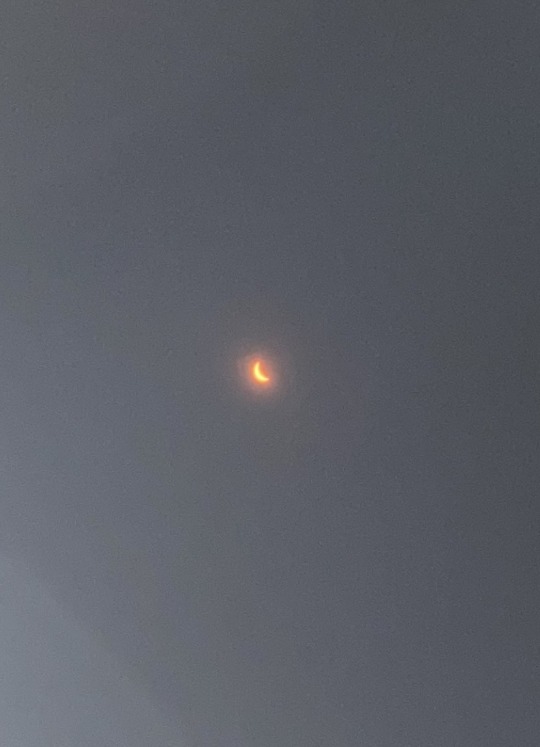
This week was what I would describe as a major moment of unity across the U.S., besides sporting events like the Super Bowl, holidays like Christmas and milestones like New Year's Eve there are few moments when the whole country has a common focus or goal. Well maybe elections but that can often be polarizing. The solar eclipse this week was a natural phenomena, a mix of science and wonder, even attributable to a higher power if you believe, and it got everyone to stop what they were doing and marvel at the moon passing in front of the sun for a short while. That being said, no one denied it was happening regardless of whether they had a scientific background or not, and everyone had access to it, but just needed to put on the protective glasses which people were able to get from everywhere, either for free or at a low cost. This experience made me think of what a just transition could look like.
Developing resilience amid increasing climate challenges is something we should all be unifying around, not just in the US but globally. In this week's class the speakers did a great job of demonstrating how a community-driven model for equitable resilience, including indigenous perspectives, community involvement in decisions, and sustainable approaches for a resilient future could make both climate action and a just transition a more attainable reality. The first speaker stressed the importance of indigenous insights in climate resilience, advocating for collaborative partnerships and equitable compensation. The second speaker discussed community-led solutions that illustrated how community engagement promotes sustainability and fairness in climate action.
Recently I was discussing with a colleague the IFC Performance Standards, which have a specific section on Indigenous Peoples as a consideration in Environmental and Social Impact Assessments for project finance. She was telling me about how the Dakota access pipeline conflict really opened her eyes to the general disregard of indigenous knowledge and voices in the present day (and historically) when it comes to avoiding destruction of nature and sacred sites. Subsequently, the discussion in class highlighted how integrating indigenous knowledge and community feedback into climate adaptation (and mitigation) plans can strengthen our collective capacity to endure and rebound from environmental risks. It is possible to safeguard livelihoods, while preserving ecosystems, and promoting solidarity and empowerment.
Circumventing the risks of exceeding planetary boundaries hinges on a sense of urgency, scientific insights and values, global collaboration, and a commitment to sustainable development. Climate action requires transitioning to renewable energy sources in a just way that does overburden any one group. It also requires adopting sustainable practices across sectors including nature-based solutions and broader biodiversity positive actions. Moreover countries need to recognize historical responsibilities and inequities between the global north and south. Above all, supporting vulnerable communities and countries disproportionately affected by climate change, is pivotal to a truly just transition.
0 notes
Text
COP pt.2 -> the intersection of climate policy and climate stakeholders
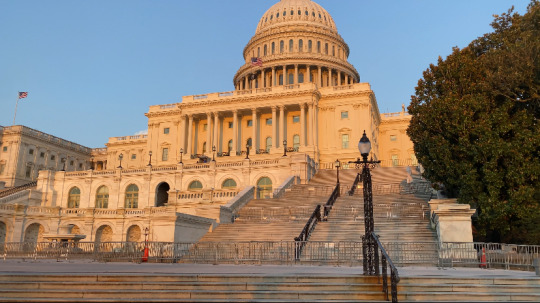
The Intergovernmental Panel on Climate Change (IPCC) reports and other scientific findings play a crucial role in shaping COP policies and actions which can feed into US policies and actions. This week's class made me think of my trip to DC about 3 weeks ago and my brief visit to the Capitol Building which I describe as "the place where decisions are made... sometimes". It also made me reflect on the ways in which the global Conference of the Parties (COP) is both similar and different when compared to the US Congress:
Global vs. National Scope, though one might argue that given the geopolitical power the US wields they are making decisions that often affect the globe.
Binding vs. Non-Binding Agreements, though COP meetings focus on resolving to implement changes that are not legally binding because they are not supreme across jurisdictions, the decisions made in congress do "rule the land" but are not always implemented uniformly across all states.
Ultimately, these differences highlight the distinct roles and mechanisms through which global and national bodies like the COP and the US Congress contribute to addressing climate change. While COP meetings focus on international cooperation and agreements, the US Congress shapes domestic policies and legislation related to climate action. So technically COP feeds into the US legislation... or at least it should.
Multilateral cooperation and diplomacy among nations is crucial to building trust, transparency, and mutual understanding, especially given the interconnected nature of climate change impacts. For progress to be made on climate action it’s imperative that countries which lead on emissions (like the US) make ambitious commitments to reduce greenhouse gas emissions in line with the goals of the Paris Agreement. Including:
Setting clear targets for emission reductions for towards a low-carbon economy.
Mobilizing sufficient financial resources, to support adaptation efforts, encourage innovation and technological development, increase capacity-building, and resilience-building.
Facilitating collaboration between public and private sectors to act on climate change with meaningful stakeholder engagement.
The annual COP events play a crucial role in shaping global climate policies and actions in addition to fostering international cooperation on climate-related issues including sessions, negotiations, and side events for not only governments but also NGOs, businesses, and scientific experts and academics (among others). While the COP meetings directly influence international climate agreements and norms, their indirect effects on US climate policy stem from the interconnectedness of global efforts and the shared responsibility to address climate change.
International climate agreements and discussions at COP meetings send market signals and create investment opportunities in clean energy and climate-friendly technologies. Participation in COP meetings exposes the US to peer pressure from other countries, in a good way. The discussions during class highlighted that there needs to be more acknowledgement and action addressing the risks of exceeding planetary boundaries, particularly concerning climate change and the risk of overshooting the 1.5 degree target.
0 notes
Text
The intersection of COP and Model UN?
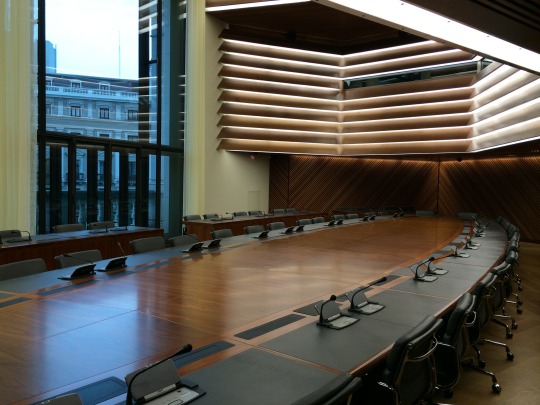
As a teen who once dreamt of working at the UN/World Bank, I was surprised to later discover as an adult that students participate in activities like Model UN where they get build critical thinking skills, practice negotiation and conflict resolution, while developing global, cultural and situational awareness as they represent countries they are assigned to with the purpose of achieving a common goal. It’s meant to mimic the real-life UN Security Council which brings together 15 countries (temporary and permanent members with the purpose of pursuing diplomacy and establishing the world order for a designated period of time and often pertaining to specific issues.
This week’s class was like taking a Model UN session and applying the format to a COP simulation. The Conference of the Parties (COP) facilitates coordination of efforts and unification of perspective for countries in their approach to combatting climate change. These countries come together to discuss and negotiate global actions under the United Nations Framework Convention on Climate Change (UNFCCC), in alignment with targets outlined in the Paris Climate Agreement.
One of the most interesting things about how COP functions is the way in which representatives from almost every country in the world gather promote the interests of their own countries using a framework for the global community, and for this reason priorities sometimes diverge. World leaders and their delegations discuss everything from reducing greenhouse gas emissions, to climate adaptation strategies, to financing for climate solutions which includes financial assistance to developing countries.
When I think about negotiation simulations, I think about how nominated speakers try to make best guesses of what works for billions of people, and how they sometimes get it right and sometimes don’t. I also think about how delicate of a balance it is to keep your country happy while also finding a middle ground with the rest of the world. People think COP is about climate commitments but it’s also about diplomacy, because without trusted allies and loyal constituents a representative of any country would be unable to achieve their goal. “When it comes to geopolitics, conflict resolution and peacekeeping skills; it is best to forget about such illusory abstractions as east and west or north and south and to realize who we really are and why we are really here” ― Wald Wassermann.
0 notes
Text
The intersection of climate change and... everything
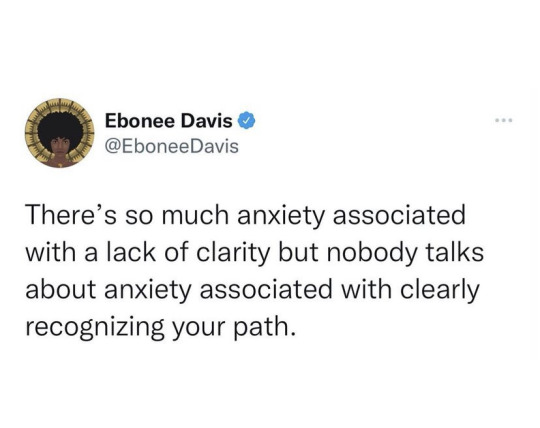
This week's class was very interesting because it allowed for free expression through a few thought-provoking discussion exercises, we explored ideas like geo-engineering, donut economics, responses to climate shocks, the roles of various actors in the climate change narrative, and personal satisfaction vs. frustration around climate change and society's response to it. I’ve learned that everyone, every single person on this planet, whether they know it or not has a climate story to tell. I’ve realized that climate change affects all of our lives in ways we sometimes do not even understand. Taking this climate change applications class alongside my electives which are focused on the impacts of climate change on public health, as well as reversing the biodiversity crisis, collectively have made me more aware of the intersection of climate change and… well everything else.
Climate narratives, framing, and storytelling play a crucial role in building a career dedicated to fighting climate change by inspiring action, driving policy changes, and mobilizing people towards (more) sustainable practices. Climate change practitioners and environmental science experts are confronted daily by the looming climate crisis, and communication is essential to opening dialogues and building discourse on areas that need the most attention. Effective climate storytelling can bridge gaps between scientific knowledge and public understanding.
I have to be honest and admit that before this year of studying climate at Columbia I looked at climate change inside of a vacuum. I really thought about the aspects of emissions, weather / warming temperatures, and natural disasters, but I couldn’t see it in all the other areas that it inevitably impacts. I never thought about things like how particulate matter which results from emissions can affect respiratory function, nor had I thought about how warming temperatures can change the trajectory of ecosystems, nor how environmental injustice in a specific community can have ripple effects for people and nature in other locations, and lastly how natural disasters can create compounded hazards because of vulnerability.
Climate storytelling has proven to be imperative to addressing climate change, it humanizes the issue by incorporating personal experiences, fostering understanding, and motivating action. Framing climate change as a global challenge encourages collective responsibility and empowers individuals to be part of the solution. Storytelling in general is instrumental in advocacy, raising awareness, influencing policies, and mobilizing support for climate-friendly initiatives. Stories of resilience, adaptation, and innovation can instill hope and motivate people to take positive steps towards mitigating climate change, such as:
Campaigns, documentaries, and social media have the potential to reach diverse audiences and spark meaningful conversations about environmental stewardship and climate justice.
Highlighting the benefits of sustainable practices, such as cleaner air, healthier ecosystems, and a safer world for future generations, can shift mindsets.
Translating complex data into relatable narratives increases climate awareness and empowers decision-making.
The change starts with each individual, and every small act of community building, knowledge sharing, and awareness raising makes all the difference.
[Link to screenshot of tweet from X (formerly known as Twitter) from July 28, 2022]
1 note
·
View note
Text
The intersection of climate change & finance

When it comes to the topic of climate change and the financial sector, there is an immensely important role that financial institutions can play. Finance to a large extent is the fuel of economic growth, so without funding for companies, projects, and people, innovation would stagnate. That being said, the financial sector also has a responsibility to put guardrails around what qualifies for financing and what types of accounts and investments they support. What the sector decides to finance or not finance can influence what areas of the economy expand or contract. As someone who works in the financial sustainability space, I understand that financial institutions can drive change on topics of high priority like climate change.
Regulators have been looking more closely at how financial institutions are approaching physical risk and transition risk in climate change, i.e.:
Is it responsible to continue financing physical assets in areas of high risk?
Should credit be extended to fund new (or expand existing) assets in flood prone areas, especially as sea levels rise?
How are companies preparing for transitioning to a low carbon economy?
Are companies focused on phasing out high emitting fossil fuels, and are they investing in clean energy technologies?
For these reasons TCFD has been a game changer for financial institutions looking to align their portfolios and operations to a more climate-focused investment approach. Corporate involvement in climate change is crucial to limiting the level of long-term warming, reducing the causes of warming, and defining solutions that can change the trajectory of emissions projections.
The financial sector also has a role to play in the combatting of greenwashing by ensuring that there are legitimate impact metrics, risk indicators or sustainability targets. They should ensure that the companies they are financing are not committing greenwashing, as allegations have been rampant in the portfolios of financial institutions. It believed that the criteria set is either misrepresenting corporations as more environmentally conscious than they actually are, or allowing them to set targets that don’t require enough material change to their operations. Greenwashing is a threat to real change because it targets bare minimum efforts, makes vague or unsubstantiated claims, and allows “green” marketing without supporting action behind it.
There are 3 key players in influencing climate change mitigation (and adaptation) being policy makers, scientific researchers, and financiers, with each element having the ability to influence the others. Policy makers outline the expectations for long term planning, stimulation of investments, and regulatory frameworks. Scientific researchers look at the areas of risk and opportunity, making recommendations that highlight the areas of vulnerability and potential impact backed by expertise that demonstrates what would be the outcome of (in)action. In many cases science informs policy and policy guides the financial sector. So finance is not an island in the climate change landscape but it is one of the 3 fundamental pillars influencing it.
0 notes
Text
The intersection of climate communication and climate creativity... enter the Zine


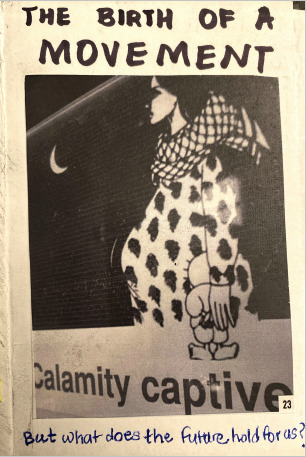

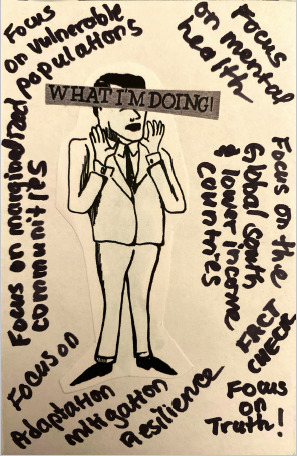
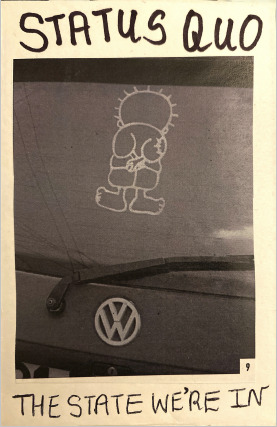

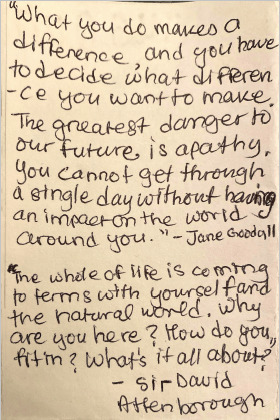
Whoever said art was therapeutic was right, and this week's assignment for class took me back to childhood in some ways, just letting ideas flow, coloring outside of the lines, folding, cutting, pasting, scribbling and creating. When I first heard about Zines I was like "what is that?" then when our local Zine librarian stopped by and explained and shared a few examples I started to get it. However, it wasn't until I created my own that I really appreciated the experience. First and foremost because it provided an opportunity to connect with classmates and share ideas on designs, to catch up on recent events and to laugh about silly things, which is especially important in a time when everything feels so serious.
Second of all, in class, I heard the TA say that last year when they made a Zine they weren't initially into it but when they got home they couldn't stop working on, it and now I understand; I did continue mine at home after class too. What I appreciate most about the experience is that it reminded me that there are still things to be enjoyed, simple pleasures like doing something for fun and not obligation (ok that is a half-truth because this is for a grade) and to express your thoughts in a way that is unrestricted. If there's one thing to take away from my Zine is that while we talk about decarbonization and net zero we need to remember to think about it from all angles and how it affects all groups.
7 notes
·
View notes
Text
The intersection of climate past and climate future

People say there are only 2 certainties in life and as you probably know taxes are one of them, but I’d say there is a 3rd, the short-term variability of climate. Climate is weather averaged over long periods of time and while climate is predictable, weather has a mind of its own, it never fully does what is expected of it. I have lived on 3 continents and observed a lot of what I know about how climate change can cause weather to behave in unpredictable ways. As a teen, I saw extreme rain and flood waters breach a sea wall in Guyana and days of flooding turn an otherwise warm and dry city of Georgetown into a pool of stagnant water for several days. As a young adult, I saw the destruction of Hurricane Sandy decimate parts of New York and turn the city into a disaster zone that lasted weeks as the clean up and repair teams try to restore a sense of normalcy. Lastly as a 20-something I saw extreme winds knock down people and property in the Netherlands, turning the calm city of Amsterdam into a place of flying debris and pedestrians trying to keep their balance.
I can’t imagine seeing the effects of extreme weather in my own cities and globally on the news then go to bed at night trying to convince myself that climate change is not real, I don’t know how climate deniers do it, but I realize that it can be a lot to bear to look at the world and think it’s all at the mercy of climate change. Formally, I would say my climate journey started in January 2015, I got offered a research position to explore how public-private partnerships could help fund adaptation initiatives in developing countries, including interviewing all the top climate and sustainability practitioners in the Dutch financial sector at the time, and also talking to thought leaders on the precipice of breaking ground on climate financing. The research was commissioned by the Dutch Ministry of Foreign Affairs at a time when they were starting to see that mitigation was not enough, investing in GHG-reducing technologies or considering mechanisms like carbon offsets just wasn't enough to address the adaptation and resilience needs that were already being felt in the developing world.
Through that initiative which was in collaboration with an energy agency, an agricultural research center, and a water research initiative, we were able to define investable opportunities for private sector investors to support the financial needs of adaptation projects in the developing world. Whether it was building dams, or planting mangroves, or implementing early warning systems, there were bankable solutions to be found in the market. Around the same time, the Green Climate Fund was receiving financial commitments from various countries to help mobilize efforts to combat climate change globally, and I thought to myself that I saw my future doing a Masters or PHD to build even more expertise on climate (because I was coming from a finance background). It took about 8 years and the exploration of many different paths and locations, but in 2022 I came across the Climate and Society MA at Columbia University and the time had finally come to make the thought I had a reality; I applied and started the following year. So my climate journey hasn’t been a linear one by any means but fortunately, every experience I’ve had outside of it is exactly what made me so prepared for it.
1 note
·
View note
Text
The intersection of climate change & climate policy

This week’s in-class presentations featured speakers from a variety of backgrounds, as they all presented on important facets driving change on climate related matters in fields of science including oceans and food systems, as well as policy, finance and humanitarian aid. We first heard about the importance of voting and mobilizing communities to participate in the political process. Then we heard about the science angle of climate and the importance of organizations like NOAA, as well as how data can be a vital part of seeing changes from climate not only on land but also in the ocean.
Next we discussed how finance is crucial to moving the needle on climate action because without funding, ideas cannot be implemented. Then we discussed climate from the angle of a lesser-known and less emphasized angle of the impact on food systems. We also discussed how oftentimes people can see the beginning of a change, action, or major decision but can’t anticipate the end, that includes the unfolding of unintended consequences. Finally we heard from the Red Cross – Red Crescent which highlighted that 90% of global crises are now somehow climate related, so humanitarians are on the forefront of the overall climate crisis.
However, I really enjoyed the presentation from Dr. Guatam Jain on how we can finance the clean energy transition. He talked about using:
Existing and new financial instruments
ESG investing
Carbon markets
Financing for necessary oil and gas transition assets
I also enjoyed Dr. Jessica Fanzo’s deep dive on the food system and was totally surprised by the anecdote about how removing trans fat from the food system created a new problem in the form of palm oil dependency which is destroying forests in many locations, especially Indonesia and Brazil.
My big idea is that people on the forefront of climate action should more closely examine the twin crises of biodiversity loss and climate change and not look at them in isolation, but rather find mutually beneficial solutions. Nature by design is able to mitigate some of the effects of climate variability and climate change. By finding more nature-based solutions we might be able to decrease the number of man-made solutions that have unintended consequences in the ocean, on land, and for people, as well as the ecosystems of all living species. Research and policy have the potential to be true catalysts of change on these topics.
0 notes
Text
The intersection of climate change & communication
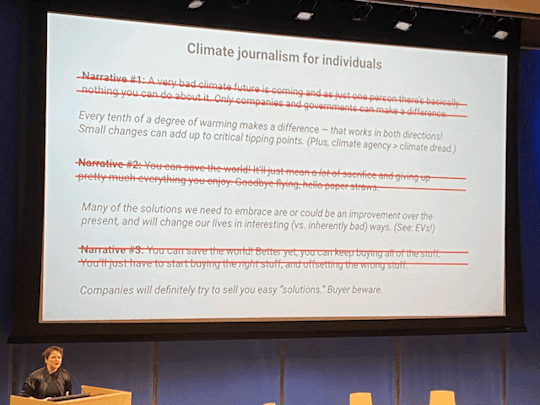
It’s safe to say that news informs our daily lives, we rely a lot on digital and print media to tell us not only what is going on in the world but also what should be prioritized as important. With competing news items and a massive amount of information available, we’ve allowed the news to filter to us what we need to know. With the dawn of social media we have been introduced to a new format, what we hear about is not just through the lens of the journalist, or the agency they write for (which determines the day’s top stories), nor the conglomerate (who owns the agencies that define the news cycles according to what benefits their business models), now we can get news from anyone, anywhere, at any time.
While we can be grateful for the foundation that traditional journalism has laid, I think we should be more grateful that we don’t need to rely on that model to inform us wholly and solely, because when I think about climate change for instance, if we were relying on a large conglomerate to decide what we needed to know, it’s likely we would only have part of the picture. There is one aspect of climate change that I notice is severely underreported on and is the impact of war on climate change. In an article by Doug Weir for the Guardian titled: ‘The climate costs of war and militaries can no longer be ignored’ he talks about how “More than 5% of global emissions are linked to conflict or militaries but countries continue to hide the true scale”.
From this week’s lecture my favorite speaker would have to be the editor from Bloomberg because they did not shy away from the tough audience questions including acknowledging that we are in an era where there is consolidation of news outlet ownership at the top, and that we are still recovering and rebuilding trust from the fake news allegations created during the 2016-2020 political tornado of alternative facts. The presenter had a very organized and well thought out presentation, and really provided some key takeaway items to apply in our daily lives when talking about climate change in both close-knit and wider circles. Including the importance of the following:
“Meeting readers where they are, when they get there.
Reframing the observable world.
Identifying an inflection point.
Offering analysis or a counterintuitive angle.”
I also appreciate the discussion around how bringing people to the table to discuss climate change works best when you don’t lead with what they need to sacrifice. The Paper straw example was visually on point and resonates with anyone who ever sat and thought to themselves If this straw melting in my drink is how we’re gonna save the planet then there will be a long road ahead. In reality, straws are a drop in the bucket of the issues we face, while it’s important to stop single use plastics they have to be replaced with solutions that are practical and have longevity so the consumers are inclined to keep using it. This discussion although seemingly small made me think of the ongoing debate about whether people should be paying a premium for plant-based milk, why does almond milk cost more than cow’s milk when one is probably costing the environment more than the other.
To move the needle on the bigger topics like how researchers claim that 12 months of emissions from the Ukraine war are comparable to a year of emissions from 1-3 countries depending on size, we need to start have the smaller tough conversations on milk and straws, to graduate to the military industry complex and how it is harming the planet in more ways than we realize.
While we can be grateful for the foundation that traditional journalism has laid, I think we should be more grateful that we don’t need to rely on that model to inform us wholly and solely, because when I think about climate change for instance, if we were relying on a large conglomerate to decide what we needed to know, it’s likely we would only have part of the picture. There is one aspect of climate change that I notice is severely underreported on and is the impact of war on climate change. In an article by Doug Weir for the Guardian titled: ‘The climate costs of war and militaries can no longer be ignored’ he talks about how “More than 5% of global emissions are linked to conflict or militaries but countries continue to hide the true scale”.
From this week’s lecture my favorite speaker would have to be the editor from Bloomberg because they did not shy away from the tough audience questions including acknowledging that we are in an era where there is consolidation of news outlet ownership at the top, and that we are still recovering and rebuilding trust from the fake news allegations created during the 2016-2020 political tornado of alternative facts. The presenter had a very organized and well thought out presentation, and really provided some key takeaway items to apply in our daily lives when talking about climate change in both close-knit and wider circles. Including the importance of the following:
“Meeting readers where they are, when they get there.
Reframing the observable world.
Identifying an inflection point.
Offering analysis or a counterintuitive angle.”
I also appreciate the discussion around how bringing people to the table to discuss climate change works best when you don’t lead with what they need to sacrifice. The Paper straw example was visually on point and resonates with anyone who ever sat and thought to themselves If this straw melting in my drink is how we’re gonna save the planet then there will be a long road ahead. In reality, straws are a drop in the bucket of the issues we face, while it’s important to stop single use plastics they have to be replaced with solutions that are practical and have longevity so the consumers are inclined to keep using it. This discussion although seemingly small made me think of the ongoing debate about whether people should be paying a premium for plant-based milk, why does almond milk cost more than cow’s milk when one is probably costing the environment more than the other.
To move the needle on the bigger topics like how researchers claim that 12 months of emissions from the Ukraine war are comparable to a year of emissions from 1-3 countries depending on size, we need to start having the smaller tough conversations on milk and straws, to graduate to the military industry complex and how it is harming the planet in more ways than we realize.
0 notes
Text
The intersection of climate work + climate school

Abraham Lincoln once said: “give me six hours to chop down a tree and I will spend the first four sharpening the axe”. Climate action at times feels like this quote, like a slow build of ideas and efforts gradually culminating into big change. The issue of climate change is so complex that unlike the tree in this metaphor it would take several people working consistently on the strategies that allow the tree (climate change) to be tackled from every possible angle at the same time because the threat of a warning planet is imminent.
Today in Applications class I believe many students (including myself) felt vindicated to hear the alumni panelists say that after you leave school and go work in climate it's a constant effort of (re)assessing your positionality, making sure you're operating in the "right" space(s), and being gentle as well as patient with yourself to have longevity in your career. I learned that many paths can lead to the same destination and that although everyone's individual climate pathway will look somewhat different, ultimately the end goal of climate action is the same net zero.
The two pathways that resonated most with me were Madeline's because she brought what I felt sounded like a more climate finance angle to a post-C+S career, and I work at the intersection of a climate, environmental, social, and financial industry. Also, she mentioned some very interesting options for reputable institutions that have opportunities in energy. In addition to this, Rashawn's journey was interesting because he is doing so much on education which is not my focus area but is one that I truly admire. I also really liked his honesty about expectations vs. reality of the first day at a new job, but how it gets easier with preparation and perseverance.
Lastly, there was a question from the audience about the challenges of switching from full-time study to full-time work, and while I cannot relate to it because I've been studying and working full-time since the start of this program, I realize this is also my 4th degree and so I've had time and experience to adjust to both the world of work and the world of academia, compared to those soon embarking on their first work experience. I hope that next year (as many other students said) I can talk from the other side about this relatively unique experience of working and studying at the same time to encourage the small percentage of students in a similar boat.
0 notes
Text
The intersection of advocacy & activism in climate change

In August of last year, I went to the Activist New York Exhibition at the Museum of the City of New York, and this week's class and assignment made me think of that visit because of how climate change as an issue intersects with so many other pressing issues of our time, but also because each movement and meaningful change which was forged from it started with a NO from "the powers that be". FBI hostage negotiator Chris Voss says in his book 'Never Split the Difference': "Although the end goal of any negotiation is to get your counterpart to say yes, don't try to get there too quickly. Instead, start with getting to no, [because] often, the word no just means wait, or I'm not comfortable with that". Once you hear that first "no," the real negotiation begins. For this week I wanted to discuss the importance of language use and communication style in Climate Change. According to Merriam-Webster Advocacy is defined "as the act or process of supporting a cause or proposal" whereas it defines activism as "a doctrine or practice that emphasizes direct vigorous action, especially in support of or opposition to one side of a controversial issue". Fundamentally advocacy and activism start from the same root of pleading a cause you believe in, and where they differ is in how you implement. Based on these definitions, however, you would assume one action is more radical than the other because activism automatically assumes a level of controversy inherent to the issue. During the discussions between the class and the guest speakers, it felt as those these two approaches were being visually represented. Gavin presented as more of a climate advocate doing the research, following the science, and presenting academic findings in support of climate action. Alexandria was more of a climate activist filing legal cases against the government, organizing protests, and doing sit-ins. However, I have no doubt that both of them incorporate a variety of advocacy and activist approaches depending on the task or the audience. What I learned from this session is that there is no right or wrong approach per se.
Another thing that stood out to me from the in-class discussions was the stance of which groups to approach when trying to raise awareness (and in some cases inspire action) for the climate crisis. Some people feel their efforts are best spent targeting people closer to home for discussions i.e. those who know and trust their opinions, and others go straight to the opposition and try to get them to flip their stances through more animated debates. Regardless of what route you take as long as you're on the side of saving the planet then you're already making a difference.
So I guess the three key takeaways for me from this week are:
While our audience and language use are important we shouldn't get bogged down between minute differences in words that fundamentally mean the same thing. In the grand scheme of things climate activists and climate advocates are both rooted in the action of advocating for a cause they believe in.
The word activism somehow has taken on a more radical or negative connotation when in reality is barely different than lobbying, but lobbying is done behind closed doors and backed by large sums of money, whereas activism is more visible and I guess at times more visceral because the causes that need the most attention are often the most financially starved, so one might say they can't afford to be quiet.
Whether you identify as an advocate or an activist, whether your strengths are in organizing, the legal field, researching, science or financing, everyone who believes in climate change has a role to play and can start wherever they are and use whatever they have to make a difference.
1 note
·
View note